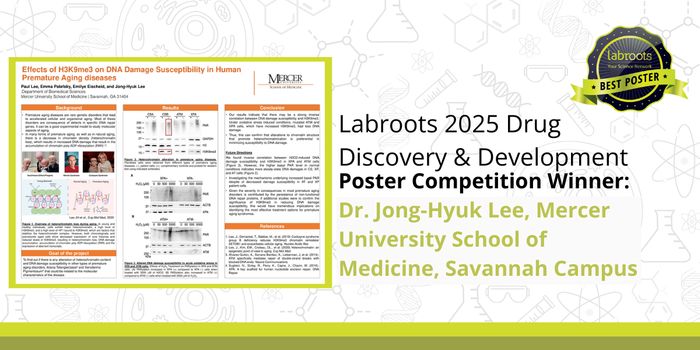The star of laboratory-developed tests (LDTs) has long been on the rise. From diabetes, to cancer, to an obscure genetic glitch, LDTs help diagnose, guide treatment, and predict patients' future health risks.
The low profile of LDTs is now on the rise too.
The Food and Drug Administration (FDA) has alerted Congress the agency will soon issue its long-anticipated draft guidance, which would broaden how the agency regulates LDTs.
The FDA has hitherto wielded enforcement discretion over LDTs-but oftentimes has not enforced certain relevant regulatory requirements.
The proposed changes, which expand the agency's oversight, impact the creation and use of high-, moderate-, and low-risk LDTs.
All tests are not created alike
LDTs are in vitro diagnostic tests that are created, validated, manufactured, and earmarked for in-house diagnostic and pathology uses. In contrast to the plethora of tests developed, manufactured, and marketed by medical device companies (many of them multinationals)-which are subject to FDA approval-LDTs are meant to be used solely within the lab where they are created. As such, the tests have not generally passed through the FDA corridors seeking approval or clearance.
According to the American Society for Clinical Pathology (ASCP), Chicago, the majority of LDTs are molecular genetic tests for which there is no commercial test available. ASCP notes that The Clinical Laboratory Improvement Advisory Committee (CLIAC) Genetic Testing Good Laboratory Practices Workgroup describes these LDTs as encompassing "a broad range of laboratory tests performed to analyze DNA, RNA, chromosomes, proteins, and certain metabolites using biochemical, cytogenetic or molecular methods or a combination of these methods."
Risky business? From low to high
FDA plans encompass premarket review for higher-risk LDTs-which could include tests for the same targets as FDA-approved or cleared companion diagnostics (tests that help a physician pinpoint if a potential treatment regimen's benefits will outweigh risks for a specific patient).
The draft guidance would also aim to gradually introduce enforcement of premarket review for other high-risk and moderate risk LDTs in the future. The FDA would recommend continuing to exercise enforcement discretion for low-risk LDTs, LDTs for rare diseases and, under certain circumstances, LDTs for which there is no FDA-approved or cleared test.
Moderate to high-risk assays will be subject to premarket review as well as registration, listing, and adverse-event reporting requirements, according to the American Society for Clinical Pathology (ASCP), Chicago. The highest-risk diagnostics will have to begin meeting premarket review requirements 12 months after the final guidance is released, with the remaining high-risk tests will be phased in over 4 years. Labs offering LDTs deemed to be moderate-risk will have to begin registration, listing, and adverse event reporting 6 months after the guidance is finalized, ASCP notes.
Who's in charge?
The only oversight requirements governing LDTs at present are the laboratory requirements prescribed in the Clinical Laboratory Improvement Amendments of 1988 (CLIA), according to The College of American Pathologists (CAP), Northfield, Ill.
In 2012, President Obama signed into law the bipartisan FDA user-fee bill, the Food and Drug Administration Safety and Innovation Act (FDASIA), notes the CAP. For the next 5 years, the Act prohibits the FDA from issuing guidance on LDT regulation unless the Agency provides a 60-day advance notice to the House Energy and Commerce Committee and the Senate Health, Education, Labor, and Pension Committee of its intent to take such action.
ASCP also notes that with the passage of the Federal Food, Drug, and Cosmetic Act (FDCA), Congress established provisions for the oversight of various aspects of lab medicine. Passage of the Medical Devices Amendments Act in 1976 granted the FDA jurisdiction over commercially distributed test kits as in vitro diagnostic devices. The FDA claims the statute also grants them jurisdiction over the regulation of LDTs. The FDA plans to continue its practice of enforcement discretion with regard to LDTs for rare diseases and unmet medical needs. Premarket or quality systems review will not be required for these types of assays, however, labs will have to register and list them.
Stakeholders take a stand
In the official FDA Voice Blog, Jeffrey Shuren, MD, director of the agency's Center for Devices and Radiological Health, which regulates clinical diagnostics, notes that LDTs have evolved and multiplied because of advances in technology and evolving business models. "Today, many LDTs are more complex, have a nationwide reach and have higher-risk uses such as detection of risk for breast cancer and Alzheimer's disease," he says in the post. "And yet they don't undergo premarket review - or have adequate controls in place to assure proper test design and development, even when they compete with FDA-approved IVD test kits that conventional manufacturers market."
This is a concern because without appropriate safeguards, neither patients nor their health care providers can be assured that these tests are safe and effective. "This is particularly troubling when an FDA-approved test is available, because it puts patients at unnecessary and avoidable risk," he adds.
Appropriate regulation of LDTs is a high-priority issue for ASCP to assure that only high-quality, clinically and analytically valid diagnostic lab tests are offered to patients.
At this early stage of the genetic diagnostic era, it is vital that federal agencies strike the right balance in asserting their authority over the regulation of laboratory developed tests. The regulatory infrastructure adopted must be sufficiently meticulous to safeguard the public without being so burdensome that it impedes the emerging technology.
The CAP has put forth a risk-based model comprising a public-private partnership to address oversight of LDTs in an inclusive, systematic way. Its proposal relies on third-party accreditors and inspectors to oversee and monitor standards for low- and moderate-risk LDTs; high-risk LDTs would be reviewed directly by the FDA. The CAP presented this model to the FDA, and continues discussions with the agency.
On September 10, the American Association for Clinical Chemistry (AACC), Washington, DC, will be presenting an hour-long webinar focusing on the LDT Guidance, featuring Alberto Gutierrez, PhD, director of the FDA's Office of In Vitro Diagnostic Devices. Gutierrez will discuss the agency's regulatory objectives are and how they could potentially affect a lab and its ability to perform LDTs. Topics will include how the new draft guidance could potentially affect molecular testing and other leading-edge tests, what data labs will need under the draft guidance document to provide for new and existing LDTs, what constitutes a modification to an LDT, what the agency will require when modifications are made, draft guidance requirements for the data necessary for registering and listing an LDT, what constitutes an adverse event when performing an LDT and the laboratory's responsibilities for reporting it, what LDTs may be subject to lesser oversight, and how the agency plans to phase-in periods for compliance.
A comment period will open at a future time, when the draft guidances are published in the Federal Register and the public is informed of the start of the comment period. The agency also plans to hold a public meeting during the comment period to gather public input.
A year ago this development could not be foreseen. The discussion was stalled in its tracks. What a difference a year makes.









